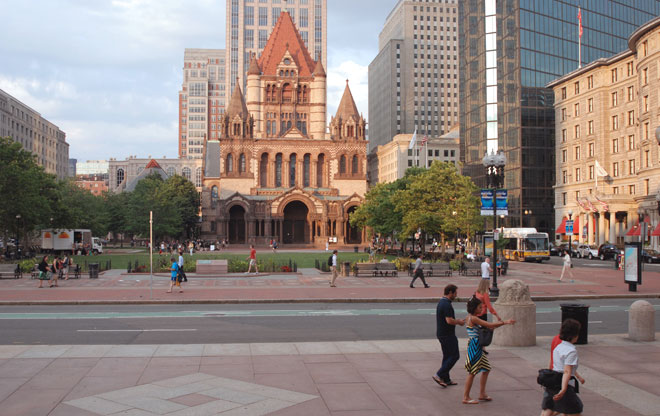
The Central Green
The central green of Copley Square allows for unobstructed views between the Boston Public Library and Trinity Church, strengthening the connection between the two and the perception of the Square as the front yard to these notable buildings. It provides a place of respite from the square’s busy surrounding streets.
Image: Daniel Norman 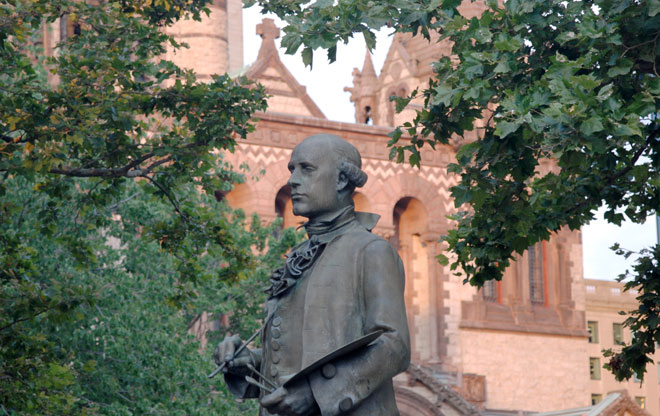
Copley Himself
The square, originally called Arts Square, was renamed for John Singleton Copley (1738 – 1815), an American-born painter active in both colonial America and England. He is most famous for his portrait paintings of important middle-class figures in colonial New England. Copley was arguably the greatest and most influential painter during his time. His work came to define a Realist art tradition in America.
Image: Daniel Norman 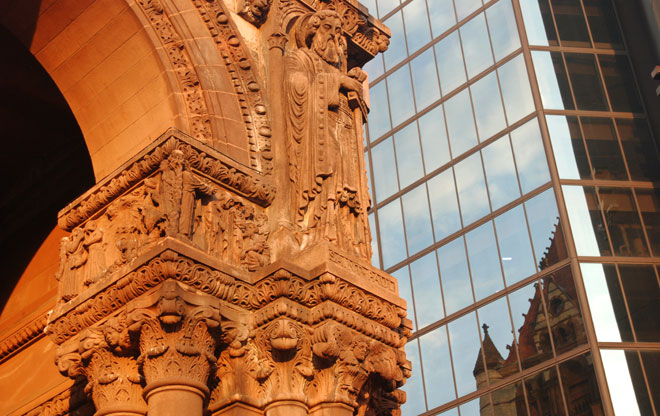
Richardsonian Romanesque
Trinity Church, a National Historic Landmark, was designed by Henry Hobson Richardson, an American architect who had trained in Paris at the Écoles des Beaux-Arts. For this church, Richardson infused traditional Romanesque architecture with new ideas to create something distinctly American: Richardsonian Romanesque architecture.
Image: Daniel Norman 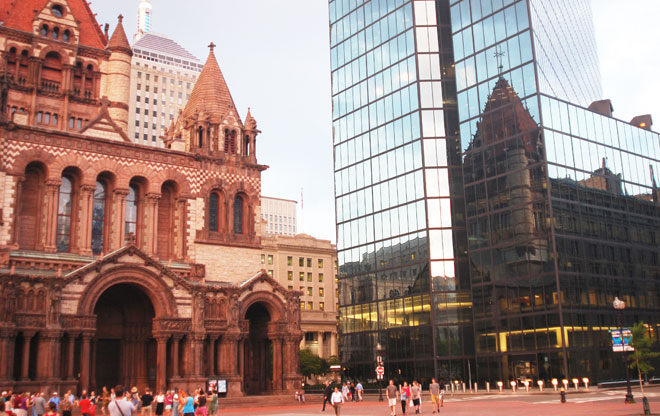
Two Architectural Icons
With its heavy walls of rough-faced stone, rounded arches, and massive towers, Trinity Church epitomizes Richardson’s bold new style. The church is located next to another Boston architectural icon, the John Hancock Tower, a 1972 modernist glass skyscraper by I. M. Pei & Partners. These two buildings share and engage in a wonderful architectural dialog in both time and materiality. The reflection of the church in the new building has become an iconic image of Boston.
Image: Daniel Norman 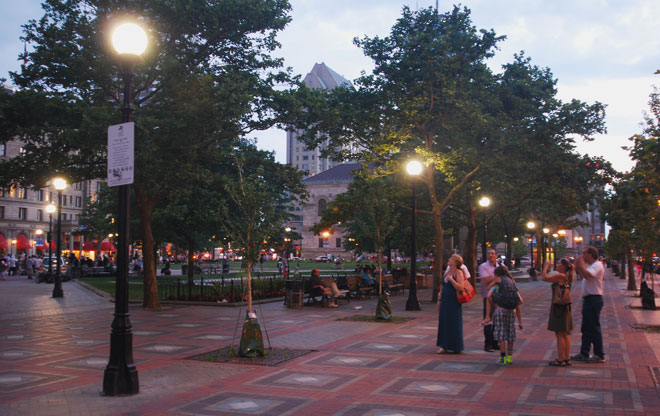
Carpet Pattern Paving
The wide sidewalks surrounding the square provide seating options and are actively used during the day and evenings by residents and visitors alike for programmed activities or for just sitting and strolling. The carpet pattern of the paving brings a rich texture to the square’s sidewalks and seating areas. The double row of trees provides shade and a strong landscaped edge.
Image: Daniel Norman 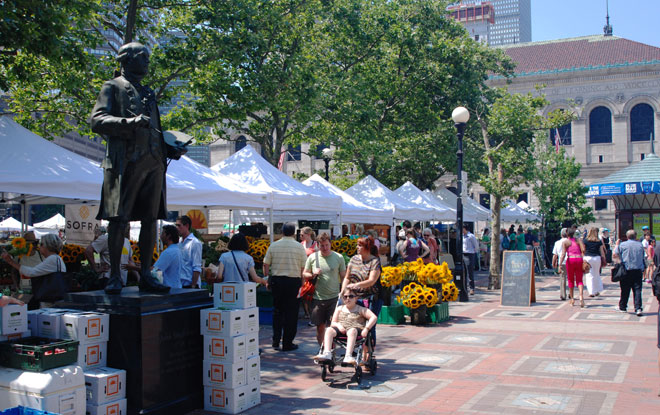
Farmers' Market
The farmer’s market at the square fills the wide sidewalks. It's the biggest and busiest in downtown Boston. It’s a great source for local produce, fresh flowers, lunch foods, baked goods…the list goes on. It’s one of the many activities that bring visitors and residents to the heart of Back Bay.
Image: Daniel Norman 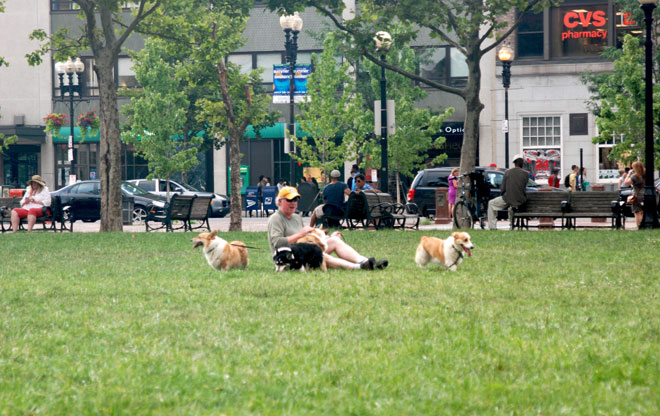
A Place to Chill
The large lawn adjacent to Boylston Street’s busy sidewalks is a place for repose for Boston residents and visitors and a respite from the sometimes intense activity of the surrounding sidewalks.
Image: Daniel Norman 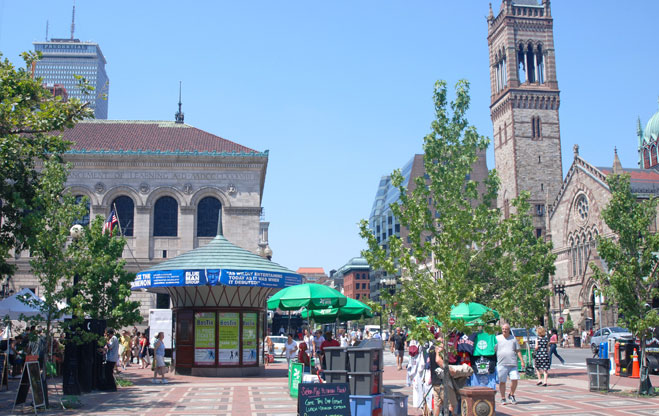
Parisian-Style Kiosk
The corner of Boylston and Dartmouth streets is the site of the Bostix booth; a source of half-price, day-of-the-show tickets and a full-service box office. The booth, designed by Graham Gund, is modeled after a Parisian kiosk. In the background is the Boston Public Library, regarded as an important Renaissance design building by McKim, Mead, and White.
Image: Daniel Norman 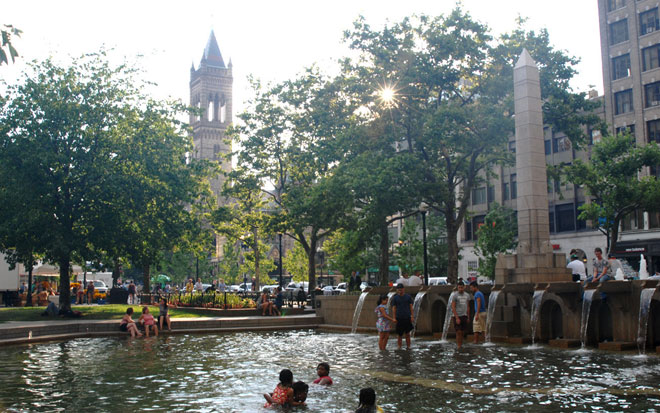
A Pool and a Stage
The fountain, built as a Centennial fountain in 1989, faces the interior of the square and is enjoyed by many on a hot summer day. Vertical elements and water jets give the fountain a presence along the Boylston Street sidewalk and provide additional seating. The pool, when the water level is dropped, also functions as a stage.
Image: Daniel Norman 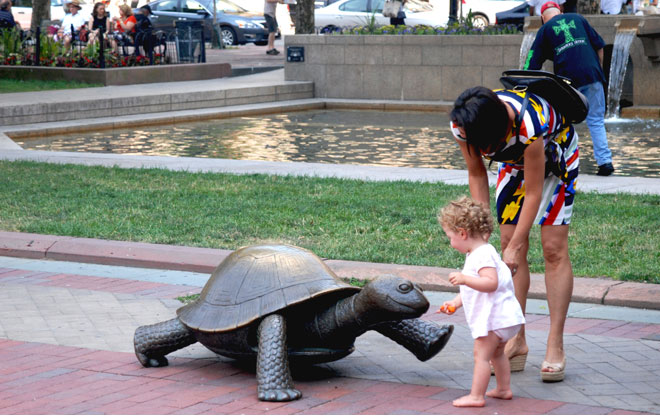
Slow But Steady
The Tortoise and the Hare sculpture celebrates the Boston Marathon runners: “slow but steady wins the race.” It’s a popular attraction for the square’s youngest visitors. The artist, Nancy Schon, is also the sculptor of the Ducklings in Boston Common, celebrating the children’s book, Make Way for Ducklings.
Image: Daniel Norman